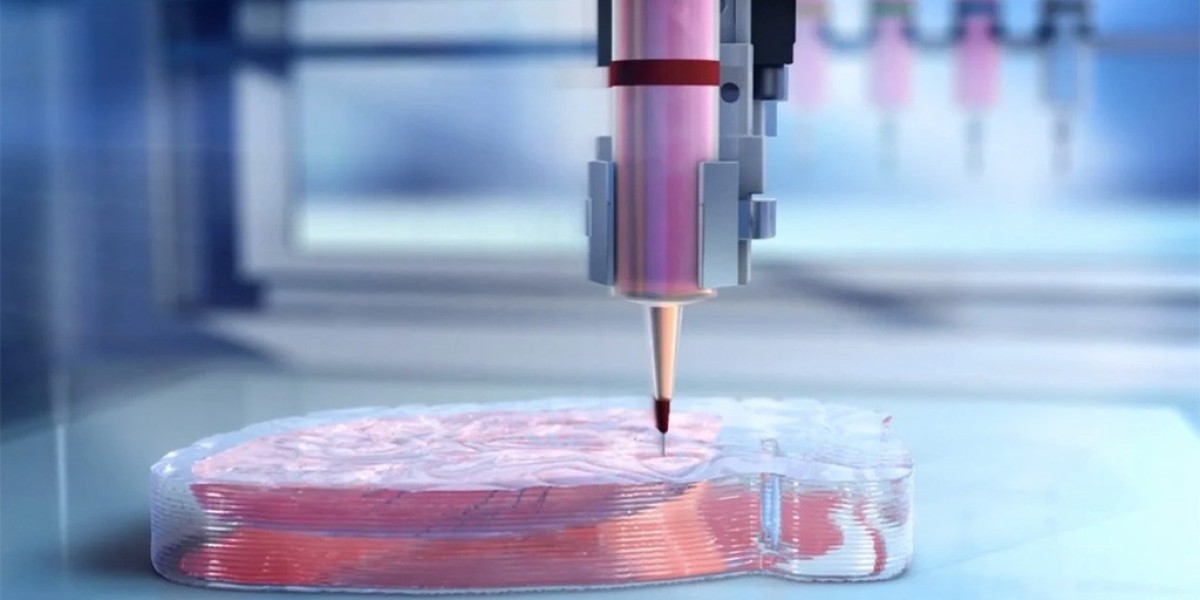3D bioprinting is an advanced manufacturing technique that involves using living cells, growth factors, biomaterials like polymers and carbohydrates, to print layer upon layer of living and functional tissues and organ. This technology uses the principles of 3D printing and integrates it with biology and medicine to fabricate and reproduce biological tissues and organ substitutes. The process involves extracting cells from a donor, multiplying the cells outside the body, and then using 3D printers to carefully deposit cells, along with biocompatible inks and biomaterials, into precise 3D structures that emulate natural tissues.
The Development
The concept of 3D Bioprinting emerged in the late 1990s and early 2000s from converging fields like tissue engineering, 3D printing, materials science, and cell biology. However, it was not until the mid to late 2000s that major progress was made in the field with technologies like inkjet bioprinting and laser-assisted printing which allowed for depositing living cells with high accuracy and resolution. Since then, 3D bioprinting has advanced tremendously with improvements in resolution, multimaterial printing capabilities, and the range of cell and matrix materials that can be used for bioprinting tissues. Today, researchers and companies across the world are developing new 3D bioprinters, bioinks, and novel applications in regenerative medicine, drug testing, and personalized medical treatment.
Applications for Regenerative Medicine
One of the most exciting applications of 3D bioprinting lies in regenerative medicine for printing human tissues and organs. Researchers have been able to 3D print skin, bone, cartilage, muscle, and vascular grafts which can help patients who need organ transplants. 3D printed skin substitutes have been tested for wound healing and burn treatment while printed bones and cartilage hold promise for orthopedic surgeries. Scientists are also working towards more complex tissues like liver, kidney, and heart patches which can potentially be used to treat damaged organs. Moreover, 3D bioprinted tissues can be used in drug development for efficacy and safety testing by creating tissue chips that mimic human physiology.
Customized Implants and Prosthetics
Another application of this technology lies in creating customized prosthetics and implants. 3D bioprinters can print prosthetics and implants tailored to an individual's medical images and physiology. This reduces the need for complex surgeries with standard implants and allows for better integration with tissues. For example, cranio-maxillofacial implants tailored for jawbone deformities, knee or hip implants designed from a patient's MRI scan, and customized prosthetics with features like veins and textures. Bioprinted bones and cartilage are also being studied for customized joint replacements. Such personalized implants are expected to enhance treatment outcomes, reduce surgery time and promote faster healing.
Tissue Models for Drug Development and Research
An invaluable use of 3D bioprinting lies in building tissue models for drug development, toxicity testing, and disease modeling through the creation of tissue chips. These biologically accurate microfluidic tissue constructs represent human physiology better than traditional 2D cell cultures. For example, printed liver models can predict drug metabolism, toxicity, and responses more accurately. Cancer and normal tissues are also being printed to study tumor growth, drug effects, and new therapies. Researchers have constructed tissue chips mimicking heart, bone, cartilage, lung, and liver. In the future, entire disease-on-a-chip platforms combining multiple organoids promises to transform drug testing away from animal models. The tissue models can also help study disease mechanisms, diagnose rare disorders, and aid precision medicine approaches.
Commercialization and Future Directions
With its huge potential in healthcare and medicine, it has gained significant interest from private companies, research institutes, and investors over the past decade. Companies like Organovo, Poietis, 3D Bioprinting Solutions, CELLINK, and Allevi are leading the field of biofabrication and developing cutting-edge 3D bioprinters, bioinks, and applications. Multiple clinical trials are already assessing 3D printed tissues for various indications. Engineers and life scientists continue to push the boundaries by printing more complex multi-cellular constructs and entire mini-organoids. Other efforts are focused on vascularizing printed tissues using microfluidic networks, optimizing tissue maturation, and translating research into FDA-approved therapies and medical products. With further development, 3D bioprinting could transform healthcare, drug discovery and revolutionize how organs are manufactured and disease is treated.
It is poised to revolutionize medicine by creating fully functioning living and replacement tissues and organ substitutes. With progress in bioinks, bioprinters, and tissue development processes, many experts believe that this technology can potentially address the worldwide shortage of organs available for transplantation. It also holds immense potential for developing personalized implant designs, drug discovery applications and disease modeling platforms. While several challenges remain, it promises a new paradigm in regenerative medicine by enabling the fabrication and replication of biological constructs to repair, replace, maintain and enhance human tissue and organ function.
For More Insights Discover the Report In language that Resonates with you
Get more insights: 3d Bioprinting
About Author:
Alice Mutum is a seasoned senior content editor at Coherent Market Insights, leveraging extensive expertise gained from her previous role as a content writer. With seven years in content development, Alice masterfully employs SEO best practices and cutting-edge digital marketing strategies to craft high-ranking, impactful content. As an editor, she meticulously ensures flawless grammar and punctuation, precise data accuracy, and perfect alignment with audience needs in every research report. Alice's dedication to excellence and her strategic approach to content make her an invaluable asset in the world of market insights.
(LinkedIn: www.linkedin.com/in/alice-mutum-3b247b137 )







